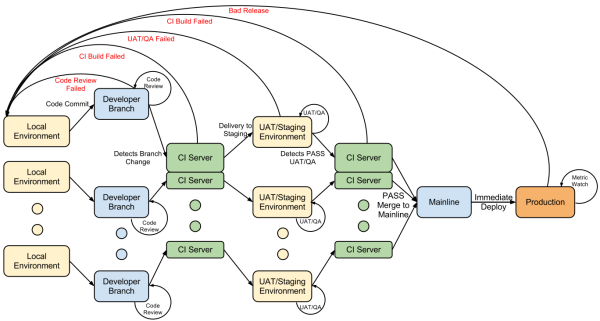Svn Branch Diagram Tool

In Subversion, branches and tags are nothing more than copies of a revision. The fact that branches are located in the branches directory and tags in the tags directory is purely convention. In the examples below, my-repo is the hostname of the Subversion server, project-x is the project that we wish to branch, and my-branch is the name of the branch that we want to create. Branching Here's how to create a branch called my-branch from the trunk of a project called project-x using either the svn command or the Subclipse user interface. Adobe Premiere Cs3 Full Crack more. • Using command line.
Merging There are a few Subversion fundamentals that should be presented first. In Subversion, a revision is a snapshot of the entire repository. So saying 'revision 18 of HelloWorld.java' is incorrect. Instead, you should say 'HelloWorld.java in revision 18 of the repository.' Can you just ask a tool to compare two revisions?
Svn copy -r HEAD -m 'Created branch my-branch.' Can you just ask a tool to compare two. During a conflict relate to the conceptual 3-way merge diagram. A tool for illustrating SVN. Company from SVN to Plastic SCM. 'The branch explorer was created after the typical blackboard diagram that every team draws.
Asking a tool to compare revision 18 and revision 32 is asking the tool to compare the entire repository at versions 18 and 32. This is almost certainly not what you want. Instead, you must supply paths along with revisions! A path and revision combination can be written as sourceURL@Z where sourceURL is the full path (including hostname) and Z is the revision. The @-symbol is the separator. Now it makes sense to compare svn://repo/project-x/trunk/HelloWorld.java@18 and svn://repo/project-x/trunk/HelloWorld.java@32.
Merging (in the context of revision control) is usually a 3-way merge. A 3-way merge is when two descendant files are merged with a common ancestor as the base. The algorithm goes like this: Start with the base, take per-line changes from left and right as long as they do not conflict. If they conflict, let the developer resolve the line(s) manually. So given two sourceUrl@Z values, and the fact that merges involve three files, what's the third? It's the common ancestor of the two sourceURL@Z values!
How do I know what the common ancestor of two files is? In general, it's the last revision when the two files were synchronized.
In practice, it's usually the revision when the copy was made--in other words, when the branch was created. Merge Example: Merge Branch Changes Into Trunk Assume that you want to merge svn://repo/project-x/branches/my-branch@HEAD and svn://repo/project-x/trunk@HEAD and put the result into the trunk. And assume that the common ancestor of both is svn://repo/project-x/trunk@19015. Finally assume that your working copy at /home/jsmith/project-x points to svn://repo/project-x/trunk@HEAD. What does this look like conceptually? After a merge from the trunk into your branch, you should record the end revision of the trunk (i.e.
The HEAD revision at the time of the merge). Let's call this revision r1.
R1 becomes the ancestor in future merges! Checklist Now that we have the fundamentals down, let's cover the actual checklist.
• Tag destination branch(es). Use the naming convention before-merge- source-branch. • Lock (aka freeze) source branch(es) indefinitely. (Subversion has no high-level freeze operation but the administrator can mark the branch(es) as read-only.) • Checkout destination branch(es) into working copy (or update and make sure there are no modifications in the working copy). • Merge source branch(es) to destination branch(es). (Use the example above as a guide.) • Resolve conflicts. (Subversion will automatically merge files and the files that it cannot automatically merge will be marked with a Conflict.) Here's a quote from the Subversion manual: Another small difference between svn update and svn merge are the names of the full-text files created when a conflict happens.